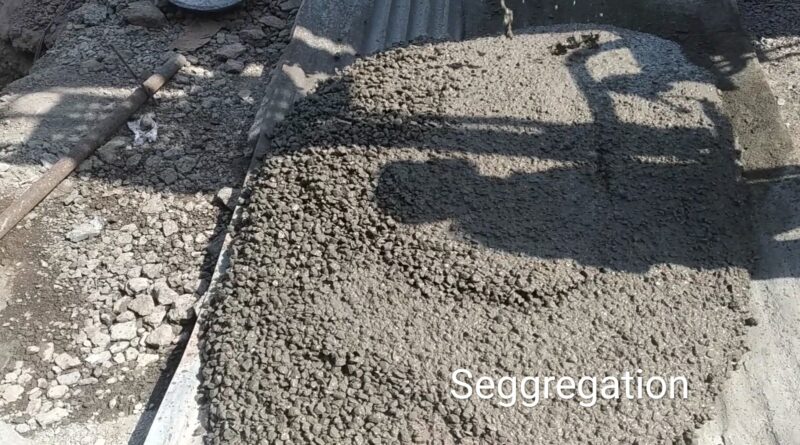What is the maximum concrete temperature during pouring on site?
The maximum temperature at which concrete can be placed & cured depends on the design mix of the concrete. Concrete can be produced in hot weather without maximum limits on placing temperature and will perform satisfactorily if proper precautions are observed in proportioning, production, delivery, placing, and curing. As part of these precautions, an effort should be made to keep the concrete temperature as low as practical.
But Concrete Temperature limits are made to check that high quality concrete with specified requirements are produced. Temperature limits changes based on the type of the elements and working conditions .
Reasons of Temperature Limit
High temperatures also affect the compressive strength of concrete. Above 100ºC, the cement paste begins to dehydrate (loses chemically combined water of hydration), which gradually weakens the paste and paste-aggregate bond.
The behavior of concrete at high temperatures is influenced by several factors, including the rate of temperature rise and the aggregate type and stability. Abrupt temperature changes can cause cracking and spalling due to thermal shock, and aggregate expansion can also produce distress within the concrete.
High water content lead to lower strength, high permeability, greater shrinkage, lower air content at given air en-training admixture.
Maximum Temperature Limits
Ideal temperature for pouring cement ought to between 24 to 32 ºC But ASTM C 1064-86 set a maximum limit between 27 °C and 35°C. If temperatures increases 35°C, the use of ice-cold water is recommended to prevent formation of shrinkage cracks .
Note :- Concrete placed & cured at a moderate temperature 17–26°C will gain higher strength & durability
Controlling the concrete temperature will surely be benificial. The concrete is less proned to cracks. Cracks are caused due to heat. Heat is produced by the chemical reactions occurring and external agencies.
EFFECTS OF COLD WEATHER ON CONCRETE
Effects of cold weather on concrete, in the absence of Special precaution, may be as follows:
a) Delayed Setting – When the temperature is falling to about 5°0 or below, the development of concrete Strength is retarded compared with the strength development at normal temperatures. The hardening period necessary before the removal of forma il thus increased and the experience from concreting at normal temperature cannot be used directly.
b) ) Freezing of concrete at Early Ages – When concrete is exposed to freezing·temperature, there is the risk of concrete suffering irreparable 1011 or strength and other qualities, that is, permeability may increase and the durability may be impaired.
c) Repeated Freezing and Thawing of concrete – If concrete is exposed to repeated freezing and thawing after final set and during the hardening period, the final qualities of the concrete may also be impaired.
d) Stresses Due Temperature differential – It is a general experience that large temperature differentials within the concrete member may promote cracking and have a harmful effect on the durability. Such differentials are likely to occur in cold weather at the time of removal of form insulation


Nice explation
Thanks brother